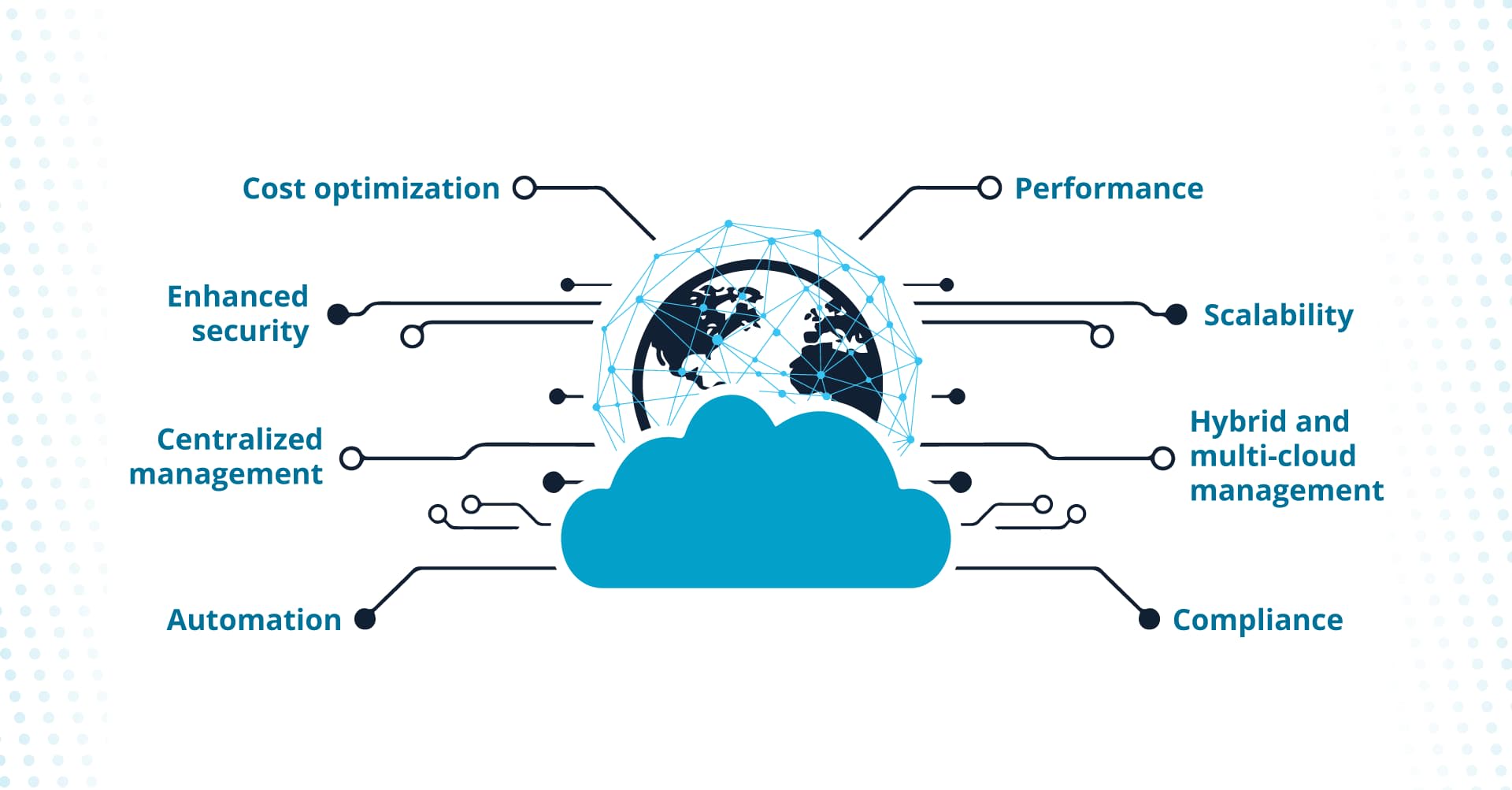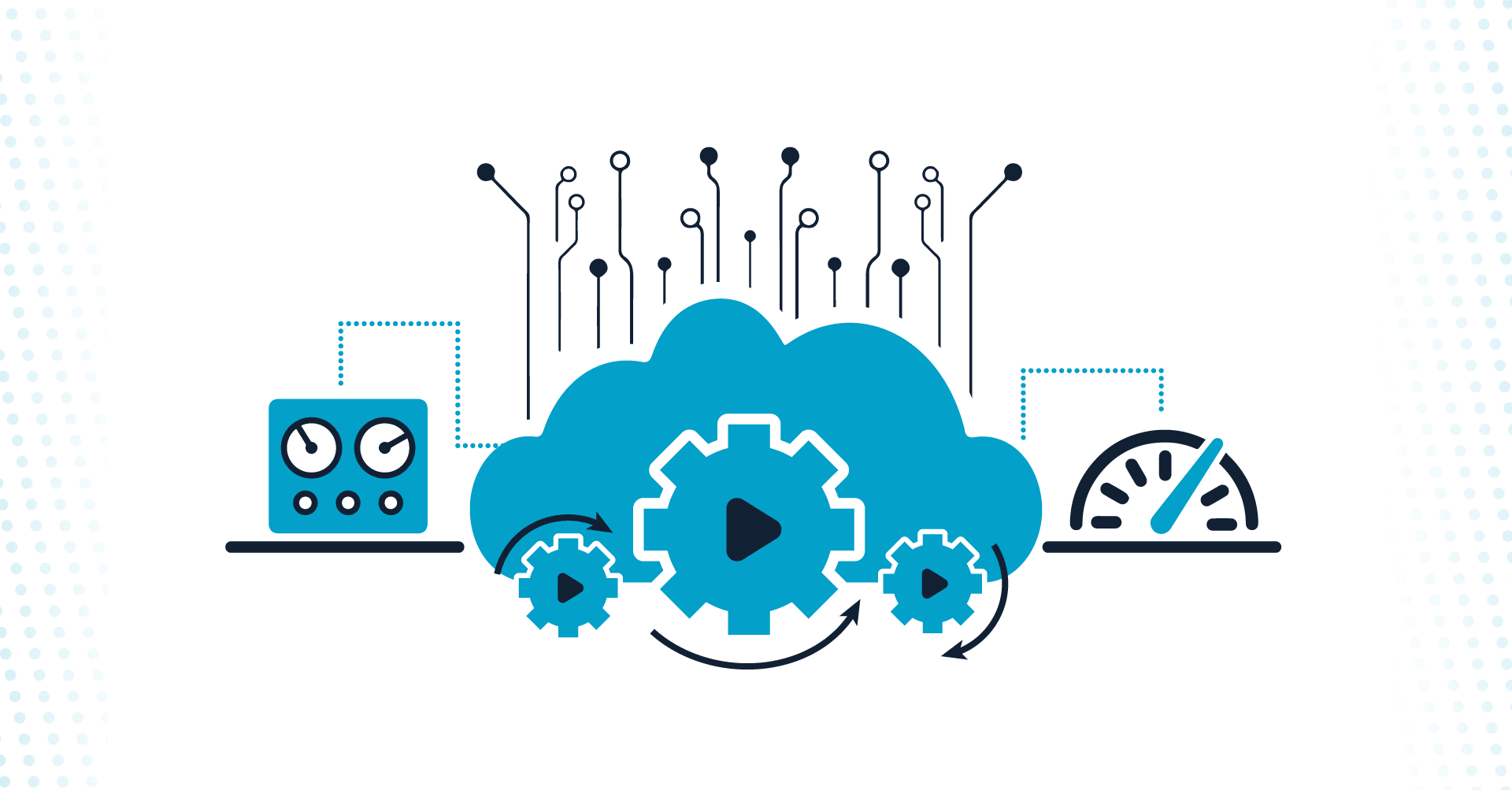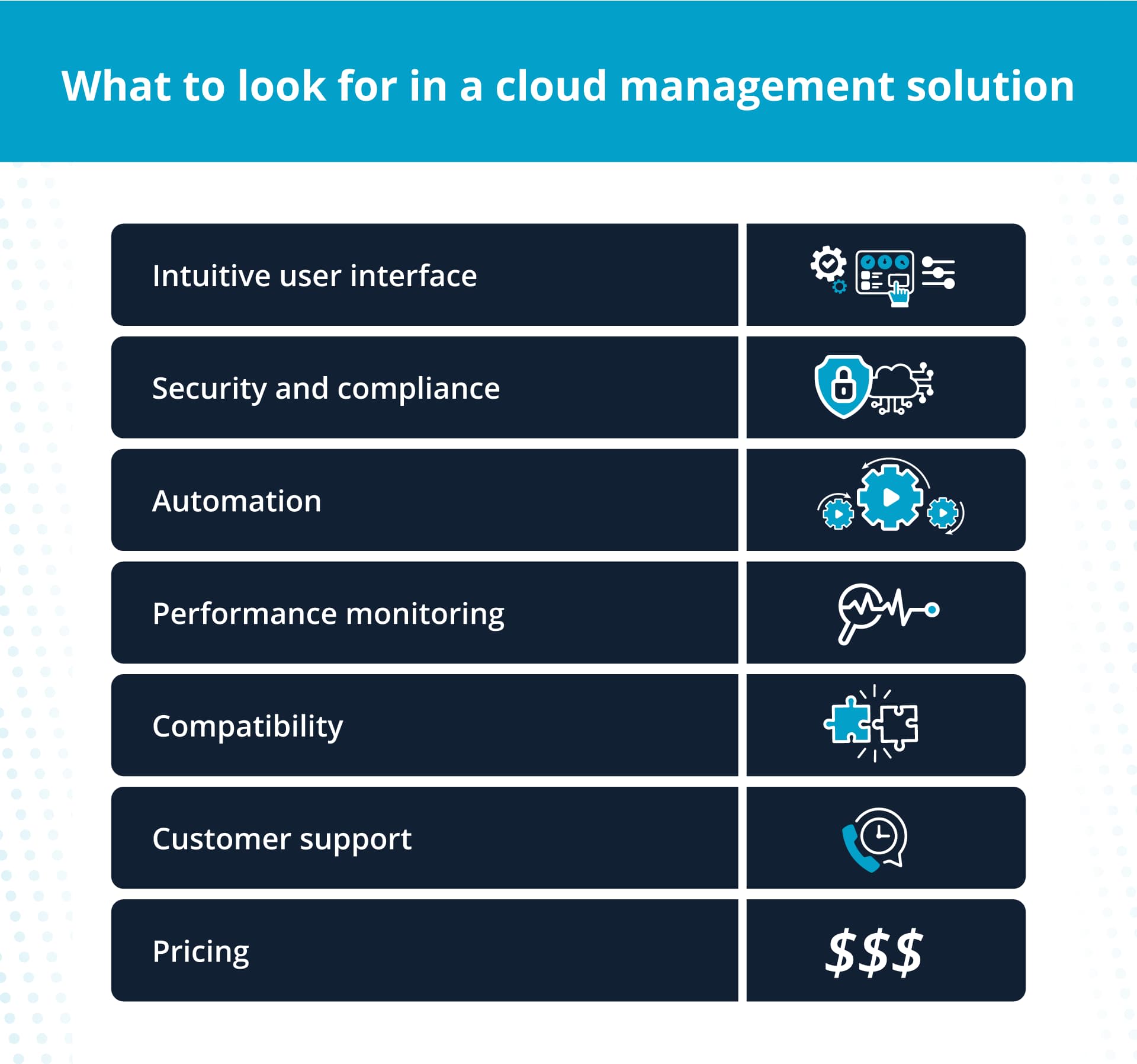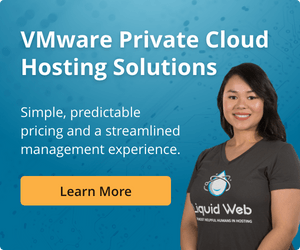Enterprise cloud management: Benefits and best practices
While adopting a cloud computing model comes with many benefits, maximizing the value of your cloud environment can be difficult, especially in a multi-cloud setup.
That’s where cloud management solutions come into play.
These tools help businesses understand their use of cloud services, allowing them to make sound organizational decisions, automate processes, and optimize cloud costs.
Let’s examine what enterprise cloud management solutions are, their benefits, and what to consider when choosing one.
What is enterprise cloud management?
Enterprise cloud management is the process of overseeing and organizing cloud resources and services within a cloud computing environment. As businesses grow and become more complex, it’s vital that they have a mechanism in place to ensure their use of cloud computing resources is efficient, compliant, and effective.
What is a cloud management solution?
A cloud management solution provides businesses with a consolidated view of all their cloud computing resources, such as virtual machines (VMs), storage, and networking.
Cloud management solutions include tools and capabilities that enable organizations to streamline operations, gain insights into resource consumption, fortify their defenses against security threats, and adhere to relevant compliance requirements.
These platforms are especially beneficial for enterprises operating within a hybrid or multi-cloud environment. For instance, businesses that use a cloud management tool won’t be restricted to one form of cloud environment. Instead, they’ll be able to navigate across multiple clouds seamlessly.
Benefits of using a cloud management platform

Adopting an enterprise cloud management solution helps ensure the success of your cloud computing initiative. Here’s why:
Cost optimization
While cloud computing providers typically offer a pay-as-you-go structure, where you only pay for the resources you consume, costs can easily spiral out of control or exceed your budget if you aren’t careful.
For instance, CloudZero found that 49% of respondents believe their cloud bill is higher than it should be. Moreover, only a third of the participants had an exact understanding of cost attribution for any given metric. That means that the majority of respondents were either estimating or didn’t have a clear idea at all.
With a cloud management solution, you’ll be better able to monitor your cloud resource usage and computing demands, which will help you optimize your cloud spending and forecast your resource needs effectively. It will also help you identify underused or unnecessary resources, which can lay the groundwork for implementing cost-saving measures.
Enhanced security
Getting a handle on security can be challenging, especially when working with an expansive cloud footprint. According to Fortinet, 95% of organizations list security as a top issue.
A cloud management platform offers strong security measures. These include role-based access controls, encryption mechanisms, auditing, and compliance with industry standards.
Having said all that, you should also put measures in place to safeguard your data and applications in the cloud. For instance, if you’re using a hybrid cloud deployment, you can move sensitive data, applications, and workloads to a private cloud rather than housing them in a public cloud.
Centralized management
Without the right tools, managing cloud ecosystems can be complicated. Luckily, many cloud management solutions simplify operations by providing a single interface through which an admin can provision, monitor, configure, and manage your enterprise’s cloud resources.
These management solutions offer a holistic view of your cloud resources, allowing you to operate your cloud environment from a single cohesive environment.
Automation

Managing cloud resources can consume a chunk of time that could otherwise be spent on other projects. With an enterprise cloud management platform, you can automate a myriad of tasks, such as resource allocation. For example, idle or underutilized IT resources can be put to use, while overprovisioned resources can be scaled down.
Other tasks you can automate include application deployment, backup and disaster recovery, and scaling.
Overall, by automating the most cumbersome areas of the cloud with a management tool, you’ll be able to save time, reduce the likelihood of human errors, boost productivity, and even go to market faster.
Performance
Cloud management solutions offer performance monitoring and analytics, meaning you can gain insights into key performance metrics. Moreover, they can help you identify performance issues, allowing you to resolve problems more efficiently.
These tools also provide load-balancing to meet spikes in traffic, ensuring optimal performance, availability, and a seamless user experience for your customer base.
Scalability
Another key benefit of implementing a cloud management solution is the ability to scale computing resources dynamically. For instance, you can scale up resources to accommodate traffic spikes or growing workloads without experiencing interruptions or downtime.
This means your organization can adapt swiftly to changing resource requirements while maintaining high performance levels.
Multi-cloud management
Many enterprise organizations use a combination of public and private clouds or have adopted a multi-cloud approach. In fact, according to a Flexera report, 87% of enterprises use multi-cloud deployments.
A multi-cloud strategy enables businesses to choose the best environment for data and workloads based on compliance, cost, and security.
However, as with any cloud architecture, challenges exist. For instance, gaining visibility into your IT operations will be more complicated than with a single cloud platform. An enterprise cloud management solution can help you overcome the complexity of managing multiple clouds, allowing you to optimize your use of cloud resources, manage expenses, and meet compliance requirements.
Compliance
Non-compliance with data privacy laws and regulations, such as HIPAA, GDPR, and PCI DSS, can result in legal issues, hefty fines, and reputational damage. Using cloud management solutions, you can ensure your cloud computing services comply with relevant industry regulations andinternal policies.
What to look for in a cloud management solution

A variety of cloud management tools are available, and finding one that’s the best fit for your enterprise cloud operations might seem like a tall order. To help you out, we’ve compiled some key features to look for when choosing a cloud management solution. These include security and compliance, automation, and compatibility.
Let’s take a closer look at each one:
- Intuitive user interface: Admins need an intuitive user interface to easily navigate the cloud management platform. As such, the best cloud management tools include self-service portals and dashboards that make managing resources simple and efficient.
- Security and compliance: Look for cloud management solutions with robust security features, such as access controls, encryption, and auditing. In addition, the best tools enable you to comply with laws and regulations, like HIPAA, as well as internal security policies. These cloud solutions also offer visibility into an enterprise’s security posture.
- Automation: Manual tasks and processes can be time-consuming and prone to human error, so choosing a cloud management solution that automates routine workflows and tasks is a big plus.
- Performance monitoring: By monitoring the performance of cloud resources, you can identify potential issues before they escalate and troubleshoot problems rapidly. A good enterprise cloud management solution should offer real-time visibility into application health and performance metrics so you can ensure your apps are running effectively.
- Compatibility: The cloud management software of your choice should be able to integrate seamlessly with your existing tools, systems, and platforms. Otherwise, you run the risk of errors or an outage. Assess your IT infrastructure with a fine-tooth comb to pinpoint potential compatibility issues or pitfalls before settling on a cloud management platform.
- Customer support: The quality of customer support shouldn’t be treated as an afterthought, as you never know when your team may run into an issue they can’t troubleshoot. That’s why a cloud vendor with 24/7 availability and support via multiple channels (e.g., live chat and phone) is ideal. Having access to a comprehensive knowledge base is also a big plus.
- Pricing: Compare plans from different cloud management platforms to find one that fits within your budget and offers the best value for your investment. Also, be on the lookout for hidden costs, as these may be tucked away in some plans.
Best practices for enterprise cloud management

Now that you know what to look for when selecting a cloud management solution, let’s explore the various best practices you should follow for effective enterprise cloud management.
Here are five of the most important ones:
1. Develop a cloud migration strategy
If you’re looking to migrate to a new cloud platform, it’s essential to develop a cloud migration strategy. This involves things like deciding which apps and workloads will be moved to the cloud and which method you’ll use in your migration process (e.g., lift and shift or replatforming).
You’ll also need to ensure that your apps and data structures are compatible with the new cloud environment to facilitate a hassle-free transition and avoid costly mistakes.
At Liquid Web, you’ll get access to migration experts who’ll help you determine the best cloud migration strategy for your enterprise.
2. Understand your role in the shared responsibility model
To maintain a secure cloud environment, you must know who is responsible for what in the shared responsibility model.
Cloud service providers are responsible for securing the infrastructure that supports your data and assets. For instance, at Liquid Web, we use strong physical security measures like motion-detecting security cameras at our data centers.
On the other hand, you’ll be responsible for securing your apps and data within the cloud environment; this could mean you’ll have to implement additional security measures like multi-factor authentication (MFA) and the Principle of Least Privilege (PoLP).
3. Implement cloud governance
Another enterprise cloud management strategy you should implement is cloud governance. Governance refers to the rules, policies, and guidelines that govern how an organization uses cloud technology. A cloud governance policy ensures that your use of the cloud is secure, compliant, and aligned with your business goals.
When implementing cloud governance, involve all stakeholders, not just the IT team. Other key factors to keep in mind include compliance requirements and the type of data that will be housed in the cloud.
4. Perform a cloud risk assessment
A cloud risk assessment refers to an analysis of an enterprise’s IT infrastructure to pinpoint potential cybersecurity gaps, threats, and vulnerabilities. You can perform a cloud risk assessment internally or hire a third party. When conducting an assessment, the key aspects you should consider are identity and access permissions, compliance, disaster recovery, and networking.
With a cloud security assessment, you’ll be able to reduce the likelihood of breaches, implement robust security controls, ensure regulatory compliance, and strengthen your overall security posture. How often risk assessments are carried out varies between businesses, but getting one done at least once every 12 months is a good start.
5. Optimize your cloud infrastructure
Modernizing your infrastructure is another cloud management best practice you should follow. Put simply, this refers to updating traditional legacy systems to unlock the benefits of modern cloud computing services.
While the lift and shift approach allows you to move your data and apps as they are to the new cloud environment and reduce disruption to your applications, leaving things in this state could do more harm than good.
A few benefits of implementing cloud modernization strategies include cost-effectiveness, enhanced scalability, and better security. For instance, you may miss out on some cloud hosting security features if you don't modernize your IT infrastructure.
When looking to modernize your systems, there are several things to be mindful of, including:
- Assessing your current environment to determine what should be optimized.
- Backing up your data before you begin the optimization process.
- Automating the modernization process to reduce human errors.
Final thoughts: Enterprise cloud management solutions
By implementing a cloud management platform, you can optimize your use of cloud resources, save time, maintain business continuity, and make more cost-effective choices.
But before choosing a cloud management solution, you need to deploy a cloud environment. If you’re searching for an experienced cloud partner, look no further than Liquid Web.
At Liquid Web, we offer a variety of cloud hosting solutions, from Cloud Dedicated Server to VMware Private Cloud plans and our new Cloud Studio.
Our Cloud Dedicated Server options come with resource isolation and the instant provisioning and on-demand flexibility of the cloud. You’ll also receive root access, 24/7 support from The Most Helpful Humans In Hosting, and DDoS protection.
Interested in a more managed approach? Then consider one of our many VMware Private Cloud solutions. Each of these comes with a secure firewall, standard DDoS protection, 10 GB networking, and high-performance NetApp SAN storage.
Want to learn more? We have a team of Hosting Advisors on hand and ready to help.
Related Resources
Keep up to date with the latest Hosting news.



